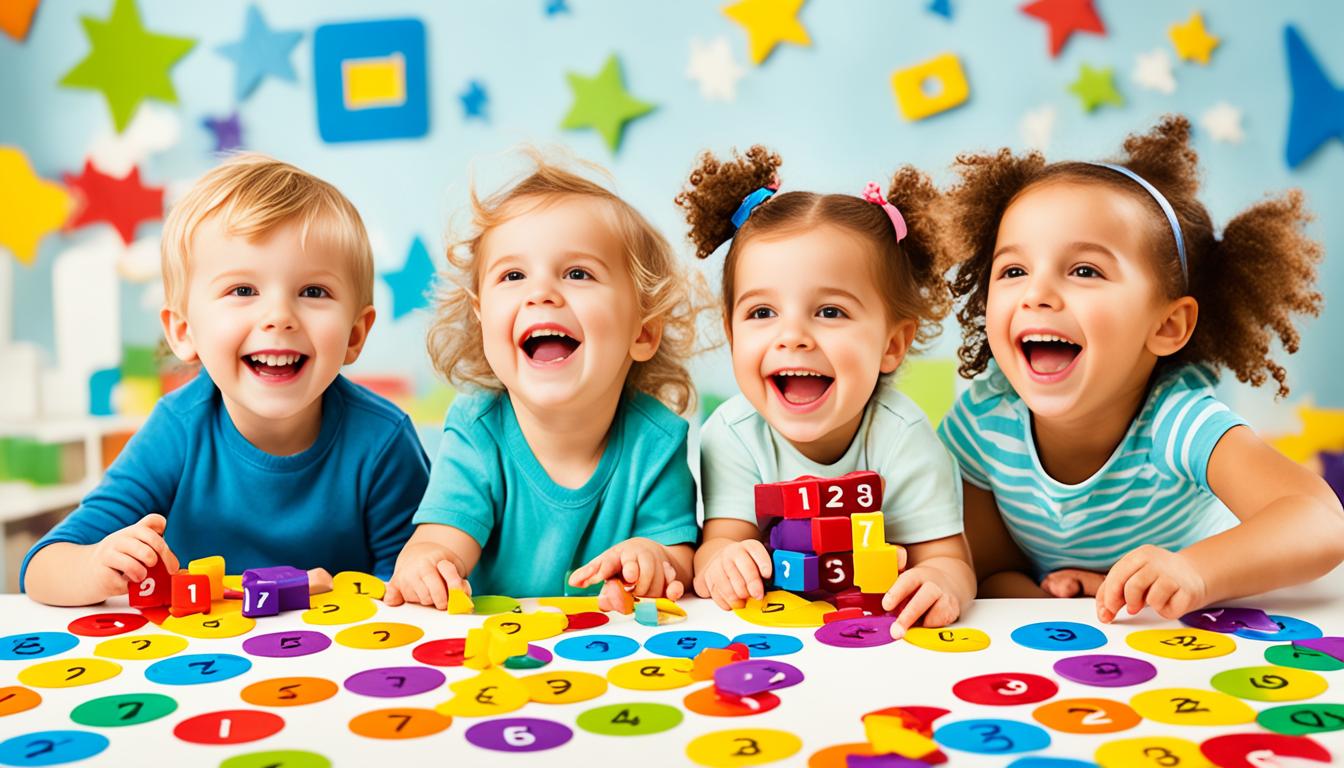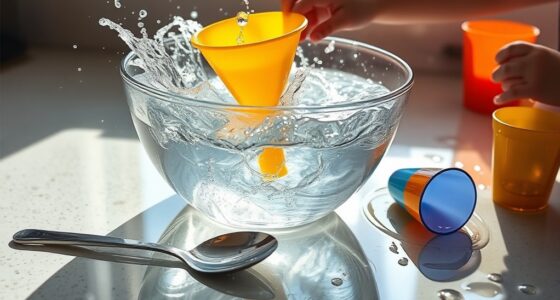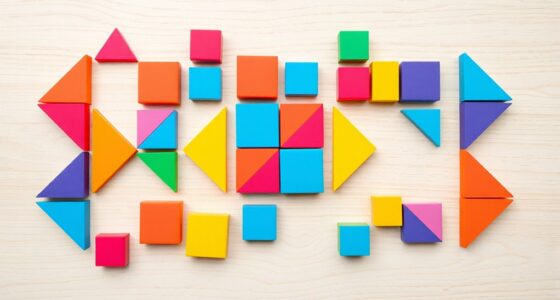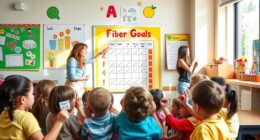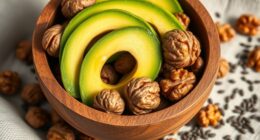Did you know that becoming proficient in numbers could be an exciting and engaging adventure for young students? The days of tedious math classes and repetitive worksheets are gone. Now, we have a math curriculum that turns mastering numbers into a fun and interactive experience.
Introducing the Kindergarten Math Made Fun curriculum, designed to transform how children learn and understand numbers. Whether used as a supplement to an existing math curriculum or as a complete math program, this innovative curriculum is sure to captivate the hearts and minds of Kindergarten students.
With 11 comprehensive units, covering essential concepts such as numbers 1-10, counting to 100, addition, subtraction, measurement, shapes, time, and money, students will discover the joy of math through interactive activities and engaging practice pages.
Teachers can easily adapt the curriculum to meet their students’ needs while ensuring alignment with grade-level standards. This flexibility allows for personalized instruction and individualized learning experiences, fostering a deep understanding of math concepts.
Key Takeaways:
- The Kindergarten Math Made Fun curriculum makes learning numbers enjoyable and hands-on.
- It includes 11 units covering numbers 1-10, counting to 100, addition, subtraction, measurement, shapes, time, and money.
- The curriculum aligns with grade-level standards and provides flexibility for teachers to adapt to their students’ needs.
- Practice pages and math centers reinforce the concepts being taught.
- Students develop a strong foundation in math through interactive and engaging activities.
The Units Covered in the Curriculum
The Kindergarten Math Made Fun curriculum provides a comprehensive coverage of various math units, ensuring a well-rounded learning experience for kindergarten students. With a total of 11 units, our curriculum encompasses a wide range of math concepts that are essential for building a strong math foundation.
Take a look at the table below to get a detailed overview of the 11 units covered in our curriculum:
| Unit | Math Concept |
|---|---|
| Unit 1 | Numbers 1-10 |
| Unit 2 | Numbers 11-20 |
| Unit 3 | Counting to 100 |
| Unit 4 | Comparing Numbers |
| Unit 5 | Addition |
| Unit 6 | Subtraction |
| Unit 7 | Base Ten/Place Value |
| Unit 8 | Measurement and Data |
| Unit 9 | Shapes |
| Unit 10 | Time |
| Unit 11 | Money |
Each unit within our curriculum is specifically designed to be engaging and hands-on, incorporating practice pages and math centers that reinforce the concepts being taught. By catering to different learning styles and providing interactive activities, we ensure that students grasp the math concepts effectively.
Furthermore, our curriculum is fully aligned with grade level standards, allowing teachers to confidently deliver high-quality instruction that meets the educational requirements. The alignment with grade level standards ensures that students develop the necessary math skills and knowledge expected at the kindergarten level.

Components of the Curriculum
In the Kindergarten Math Made Fun curriculum, we have carefully designed two main components to enhance students’ learning experience: practice pages and math centers. These components are specifically tailored to reinforce math concepts, promote engagement, and ensure alignment with grade level standards.
No Prep Practice Pages
Our curriculum includes a variety of no prep practice pages that offer students opportunities to master math concepts in an interactive and enjoyable way. These practice pages incorporate hands-on activities such as cutting and pasting, coloring, and dice games to make learning fun and engaging. By actively participating in these activities, students can reinforce their understanding of math concepts and develop essential problem-solving skills.
Math Centers
In addition to the practice pages, our curriculum provides math centers that are designed to be interactive and hands-on. These centers create a dynamic learning environment where students can practice and apply the skills and strategies they have learned in each unit. The math centers offer a range of stimulating activities that cater to different learning styles, allowing students to explore math concepts in a meaningful and practical way.
By engaging with the no prep practice pages and math centers, students develop a deep understanding of math concepts while honing their critical thinking and problem-solving abilities. Our curriculum ensures that students receive a comprehensive and well-rounded math education that aligns with grade level standards.
| Components | Description |
|---|---|
| No Prep Practice Pages | Engaging activities such as cutting and pasting, coloring, and dice games |
| Math Centers | Interactive and hands-on activities that reinforce skills and strategies |
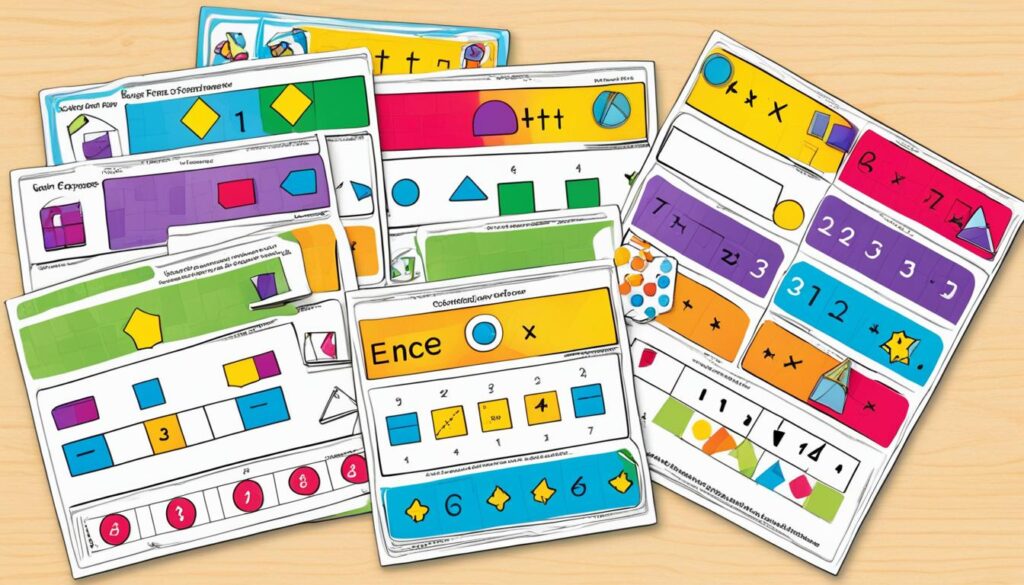
How to Teach the Units
When it comes to teaching math, the Kindergarten Math Made Fun curriculum offers teachers the freedom and flexibility to tailor their instruction to meet the needs of their students. The curriculum includes 11 units that cover a wide range of math concepts. Teachers can rearrange these units to create a scope and sequence that aligns with their students’ learning needs and preferences.
One of the benefits of the Kindergarten Math Made Fun curriculum is its ability to be used as a spiral review throughout the year. Teachers can revisit previously taught concepts by incorporating the practice pages and math centers from previous units. This reinforces learning and helps students solidify their understanding of key math concepts.
To ensure that teachers have a clear understanding of the grade level standards covered in each practice page and math center, the curriculum includes a Kindergarten Math Standards Sheet. This useful resource allows teachers to quickly identify the specific standards addressed in each unit, making it easy to supplement their current math curriculum or use the Kindergarten Math Made Fun units as a standalone curriculum.
The Kindergarten Math Made Fun curriculum is designed to be user-friendly and meets all grade level standards. With its flexible structure, teachers can confidently deliver engaging math instruction that aligns with their scope and sequence and ensures comprehensive coverage of mathematical concepts.
Teaching Methods
Within the Kindergarten Math Made Fun curriculum, teachers can employ a variety of teaching methods to enhance student learning. Some effective strategies include:
- Hands-on Activities: Using manipulatives and hands-on materials to help students visualize and interact with math concepts.
- Visual Aids: Incorporating posters, charts, and diagrams to provide visual support and reinforce learning.
- Group Work: Facilitating collaborative learning experiences where students can discuss and explore math concepts together.
- Problem Solving: Presenting real-world math problems that encourage critical thinking and application of knowledge.
- Technology Integration: Utilizing educational apps, interactive websites, and digital resources to engage students in math learning.
By implementing these teaching methods, teachers can create an engaging and dynamic learning environment that fosters students’ understanding and love for math.
“Mathematics is not about numbers, equations, computations, or algorithms: it is about understanding.” – William Paul Thurston
Teaching Strategies Comparison
| Teaching Strategy | Description | Benefits |
|---|---|---|
| Hands-on Activities | Using manipulatives and hands-on materials | Enhances student understanding and engagement |
| Visual Aids | Incorporating posters, charts, and diagrams | Reinforces learning and provides visual support |
| Group Work | Collaborative learning experiences | Encourages teamwork and peer-to-peer learning |
| Problem Solving | Real-world math problems | Promotes critical thinking and application of knowledge |
| Technology Integration | Utilizing educational apps and digital resources | Engages students through interactive learning experiences |
By incorporating these teaching strategies into their instruction, teachers can create a dynamic and inclusive classroom environment that supports students’ mathematical growth and development.
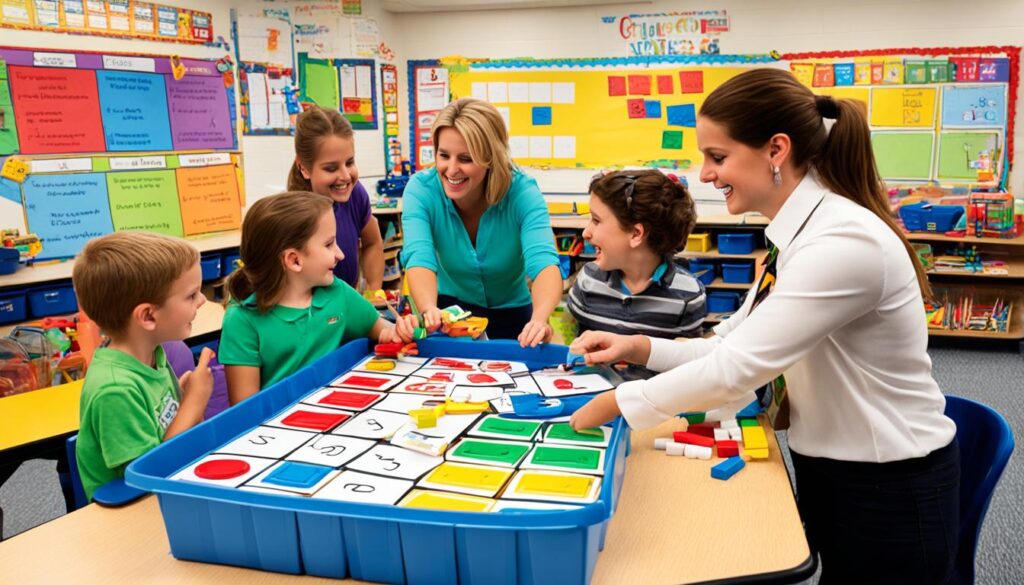
Examples of Hands-On Centers
The Kindergarten Math Made Fun curriculum offers a range of hands-on math centers that are designed to engage students and reinforce the concepts they are learning. These interactive and engaging centers provide students with meaningful learning opportunities, foster independence, and make math enjoyable.
Here are a few examples of the hands-on math centers included in the curriculum:
| Hands-On Math Center | Description |
|---|---|
| Bubble Gum Center | In this center, students count and place the correct number of objects on a gumball machine. This activity helps reinforce counting skills and number recognition. |
| Crayon Match Up Center | Students sort and find crayons that match each number. This center helps develop number sense and matching skills. |
| Count on Caterpillar Center | In this center, students practice counting and writing numbers. They can use manipulatives or write directly on the caterpillar cards. This activity helps reinforce counting skills and number formation. |
These are just a few examples of the hands-on math centers included in the curriculum. Each center is designed with specific math concepts in mind, such as counting, addition, and subtraction. By engaging students in hands-on activities, they can develop a deeper understanding of these math concepts and build a strong foundation for future learning.

Incorporating Songs and Music
Incorporating songs and music into math lessons can make learning numbers more fun and engaging for students. Research has shown that music can enhance memorization and help with concept retention. The curriculum includes math songs such as “He’s Mastering Math” and “I Just Want to Solve a Mystery” to assist students in remembering and internalizing math concepts.
By incorporating songs and music into math lessons, we can create a joyful and memorable learning experience for our students. These math songs not only entertain but also serve as effective tools for learning and reinforcing mathematical concepts. Through catchy melodies and meaningful lyrics, students can build a strong foundation in math while enjoying the process.
Music has a unique way of engaging our brains and enhancing our ability to remember information. When we combine math and music, we tap into the power of both disciplines, creating a powerful learning experience.
– Dr. Sarah Johnson, Education Specialist
Math songs provide a multisensory approach to learning, engaging both the auditory and visual senses. The rhythm and melody of the songs capture students’ attention and help them focus on the math content being taught. As they sing along and participate in the musical activities, students actively process and internalize complex mathematical concepts. Whether it’s counting, addition, subtraction, or shapes, math songs offer a fun and effective way to reinforce learning.
Benefits of Learning Through Music:
- Enhances memorization and retention of math concepts
- Fosters a positive and engaging learning environment
- Develops auditory and visual processing skills
- Engages multiple learning styles
- Makes math concepts more relatable and accessible
By utilizing math songs and incorporating music into our lessons, we can create a dynamic and effective learning experience that enhances student engagement, understanding, and retention of math concepts. Let’s make math a harmonious journey where learning through music becomes the soundtrack to our students’ numerical adventures.
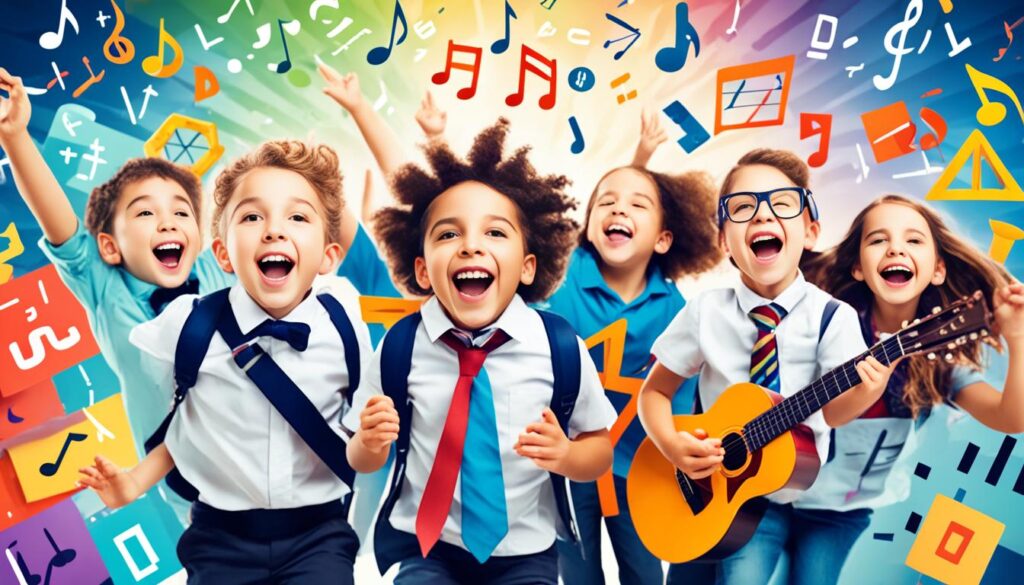
Student Testimonial:
“I used to struggle with remembering math facts, but ever since we started singing math songs in class, everything just clicks! The melody and lyrics help me remember everything, and it’s so much fun!”
– Alex, 4th-grade student
Strategies for Teaching Numbers to 10
Teaching numbers to 10 can be an exciting and engaging experience for both teachers and students. By incorporating various strategies in the classroom, we can foster a strong foundation in number sense. Here are some effective strategies to consider:
- Multi-sensory learning: Engage students in hands-on activities that involve manipulatives and movement. For example, use counting blocks or objects to reinforce the concept of quantity and number recognition.
- Visual aids: Utilize posters, charts, and visual representations to provide students with a visual reference. This helps reinforce their learning and enhances their understanding of numbers.
- Repetition and reinforcement: Provide ample opportunities for students to practice and reinforce their knowledge of numbers. This can be done through interactive games, worksheets, and group activities.
Group activities and lessons can be particularly effective in teaching number sense. Collaborative learning allows students to engage with their peers, share ideas, and apply their knowledge in real-world scenarios. Furthermore, hands-on games and activities can make learning numbers to 10 enjoyable and memorable.
Remember, the key to teaching numbers lies in creating a positive and engaging learning environment. By employing these strategies, we can help students develop a strong number sense foundation that will benefit them in their future math education.
Activities for Counting and Matching Numbers to 10
Counting and matching numbers to 10 can be an exciting and interactive way for young learners to develop their number recognition and counting skills. Here are some engaging activities that we recommend:
1. Ten Frame Fun
Materials needed: Ten frame cards, counters or manipulatives
In this activity, students will use ten frames to match the correct number of counters to a given numeral. Start by showing a ten frame card with a specific number of dots, and have students place the corresponding number of counters on the ten frame. This helps them understand the concept of quantity and reinforces number recognition.
| Ten Frame Card | Matching Number |
|---|---|
 |
5 |
2. Picture Card Sort
Materials needed: Picture cards with numerals and quantities
For this activity, provide students with a set of picture cards that display both numerals and quantities. Ask them to sort the cards based on their matching numbers. This activity helps students practice number recognition while also strengthening their visual representation of quantities.
| Picture Card | Matching Number | Quantity |
|---|---|---|
 |
3 | Three |
3. Number Puzzles
Materials needed: Number puzzles
Number puzzles are a fun way to help students practice counting and matching numbers. These puzzles consist of different pieces, each displaying a numeral and a corresponding set of objects or dots. Students can match the pieces together based on the matching numbers, reinforcing their number recognition skills.
| Number Puzzle |
|---|
 |
These activities can be done individually, in pairs, or in small groups, allowing students to engage in collaborative learning and providing multiple opportunities for practice.
By incorporating these counting and matching activities into your math lessons, you can make learning numbers to 10 an enjoyable and hands-on experience for your students.
Activities for Writing Numerals to 10
Writing numerals to 10 is an essential skill for young learners. It helps them develop number sense, improve fine motor skills, and reinforce numeral formation. Here are some engaging activities that you can incorporate into your math lessons to help students practice and master this skill.
1. Trace and Write Numbers
Provide students with opportunities to trace and write numbers using different materials. You can use pencils, crayons, playdough, or paint daubers to make the activity more interactive and fun. Encourage students to follow the strokes and form each numeral correctly. This activity helps improve fine motor skills and reinforces numeral recognition.
2. Complete Number Puzzles
Number puzzles are a great way to engage students in numeral writing. Create puzzles where students have to match numerals with their corresponding number of objects or dots. For example, they can connect the numeral “2” with two pictures of apples. This activity helps students reinforce numeral formation and develop visual recognition of numbers.
3. Form Numbers Using Manipulatives
Manipulatives, such as counting cubes or linking chains, can be used to form numbers. Provide students with a set of manipulatives and challenge them to create each numeral using the materials. This hands-on activity helps students reinforce numeral formation and develop a deeper understanding of number composition.
4. Practice Writing Numbers on Whiteboards or in the Air
Incorporate movement into numeral writing by asking students to write numbers on whiteboards or in the air. Students can use their fingers or small handheld whiteboards to practice forming each numeral. This activity helps students improve fine motor skills and reinforces numeral recognition. It also adds a fun and kinesthetic element to the learning process.
5. Engage in Group Practice and Feedback
Encourage students to practice numeral writing in small groups. They can take turns writing numbers on the board or on large pieces of paper. This collaborative activity allows students to learn from each other, share ideas, and provide feedback. It creates a supportive and interactive learning environment that promotes growth and improvement.
By incorporating these activities into your math lessons, you can make numeral writing a fun and engaging experience for your students. Remember to provide opportunities for practice, reinforce correct formation, and celebrate their progress. With consistent practice and support, students will develop strong numeral writing skills and build a solid foundation for their math journey.
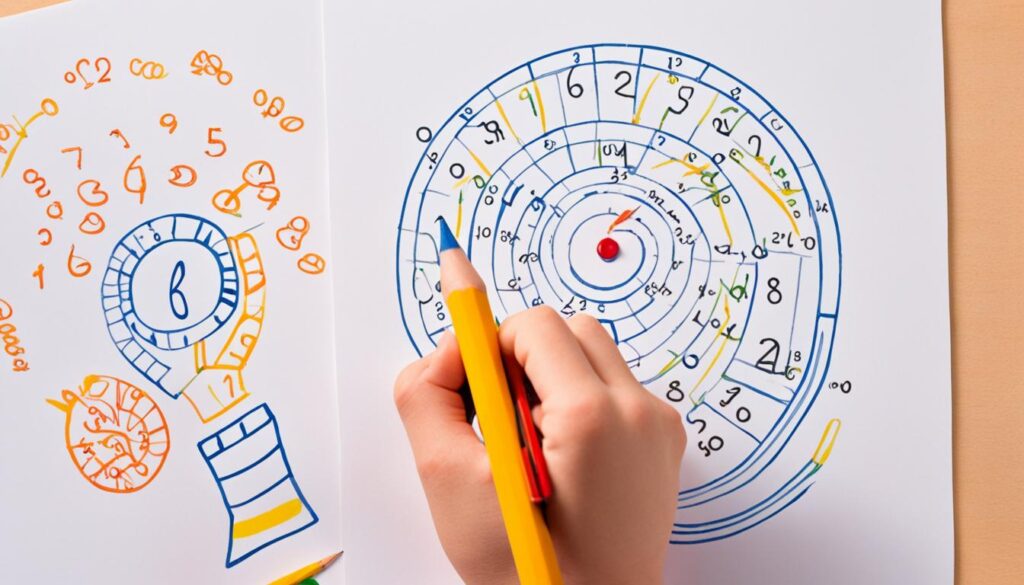
Activities for One-to-One Correspondence
One-to-one correspondence is a vital concept in developing counting skills and quantity recognition. Engaging students in activities that involve counting objects and matching them to the correct numbers can solidify their understanding of this fundamental concept. Here are some interactive and enjoyable activities that promote one-to-one correspondence:
1. Counting Dots on Ten Frames
Using ten frames is an effective way to teach one-to-one correspondence. Provide students with ten frames containing dots and encourage them to count the dots on each frame. Students can then write or select the corresponding numbers for the counted dots. This activity helps them establish a direct connection between the quantity of dots and the associated numeral.
2. Placing Counters on Corresponding Numbers
Another engaging activity is to provide students with a set of number cards and counters. Students can place the appropriate number of counters on each card to match the quantity represented. This hands-on approach allows students to physically associate the number of objects with the numerals, reinforcing one-to-one correspondence.
3. Drawing Pictures to Represent Each Number
Encourage students to express their creativity by drawing pictures representing numbers. For example, if the number is 3, students can draw three objects, such as three flowers or three animals. This activity not only reinforces counting skills and quantity recognition but also fosters their imagination and artistic abilities.
Did You Know? One-to-one correspondence is an essential foundational skill for developing mathematical fluency. It helps students recognize the order and quantity of numbers and enhances their overall counting skills.
These one-to-one correspondence activities can be implemented individually or in pairs, providing students with opportunities for practice and engagement. By incorporating such interactive and hands-on activities, educators can effectively nurture students’ counting skills, reinforce their understanding of quantity recognition, and lay the groundwork for future mathematical success.
| Activity | Description |
|---|---|
| Counting Dots on Ten Frames | Count the dots on ten frames and match them with the corresponding numbers. |
| Placing Counters on Corresponding Numbers | Use number cards and counters to associate quantities with numerals. |
| Drawing Pictures to Represent Each Number | Create drawings that depict the number of objects, reinforcing quantity recognition. |

Conclusion
At [Brand Name], we believe that math learning should be a fun and engaging experience for students. By incorporating hands-on activities, games, and interactive lessons, we can help students develop a strong foundation in number sense. Strategies like multi-sensory learning, visual aids, repetition, and group activities play a crucial role in making math enjoyable and effective.
Our curriculum offers a wide range of engaging activities that focus on counting, matching numbers, writing numerals, one-to-one correspondence, and other important number concepts. These activities provide students with ample opportunities to practice and apply their knowledge, allowing them to build their math skills with confidence.
With our approach, students not only learn numbers but also develop a deep love for math. By making math learning fun and interactive, we can inspire students to explore and master the world of numbers. Let’s empower our students with engaging activities that foster a solid understanding of math and pave the way for their future success.
FAQ
What is the Kindergarten Math Made Fun curriculum?
The Kindergarten Math Made Fun curriculum is designed to make learning numbers engaging and hands-on for students. It can be used as a supplement to any math curriculum or as a complete math curriculum for Kindergarten students.
How many units are included in the curriculum?
The curriculum includes 11 units, covering numbers 1-10, counting to 100, addition, subtraction, measurement, shapes, time, and money.
What resources are included in the curriculum?
The curriculum includes practice pages and math centers to reinforce the concepts being taught in each unit.
Is the curriculum aligned with grade level standards?
Yes, the curriculum is aligned with grade level standards, providing teachers with a clear framework to follow and ensuring all necessary topics are covered.
Can the units be rearranged to fit the needs of my students?
Yes, the units can be rearranged to fit the needs of your students. The curriculum provides flexibility and freedom for teachers to adapt the sequence of units as needed.
Can the curriculum be used as a spiral review throughout the year?
Yes, the curriculum can be used as a spiral review throughout the year. The practice pages and math centers can be revisited to reinforce previously taught concepts.
How can I supplement my current math curriculum with the Kindergarten Math Made Fun curriculum?
The Kindergarten Math Standards Sheet, included in the curriculum, indicates the grade level standards covered in each practice page and math center. This makes it easy for teachers to supplement their current math curriculum with the appropriate resources.
Are there hands-on activities included in the curriculum?
Yes, the curriculum includes a variety of hands-on math centers to engage students and reinforce the concepts being taught.
Are there songs included in the curriculum?
Yes, the curriculum includes songs such as “He’s Mastering Math” and “I Just Want to Solve a Mystery” to help students remember and internalize math concepts.
What strategies can I use to teach numbers to 10?
Multi-sensory learning, visual aids, repetition, and group activities are effective strategies for teaching numbers to 10. These can be incorporated into lessons to make learning more engaging and meaningful.
What activities can I use to practice counting and matching numbers to 10?
Counting and matching numbers to 10 can be practiced through activities such as counting objects and matching them to the corresponding number or sorting picture cards with numerals and quantities.
What activities can I use to practice writing numerals to 10?
Writing numerals to 10 can be practiced through activities such as tracing and writing numbers using different materials, completing number puzzles, or forming numbers using manipulatives.
What activities can I use to practice one-to-one correspondence?
One-to-one correspondence can be practiced through activities that involve counting objects and matching them to the correct number, such as counting dots on ten frames or placing counters on corresponding numbers.
How can I make learning numbers fun and engaging for my students?
By incorporating hands-on activities, games, and interactive lessons, teachers can make learning numbers fun and engaging for students. Strategies like multi-sensory learning, visual aids, and group activities help create a joyful and memorable learning experience.
